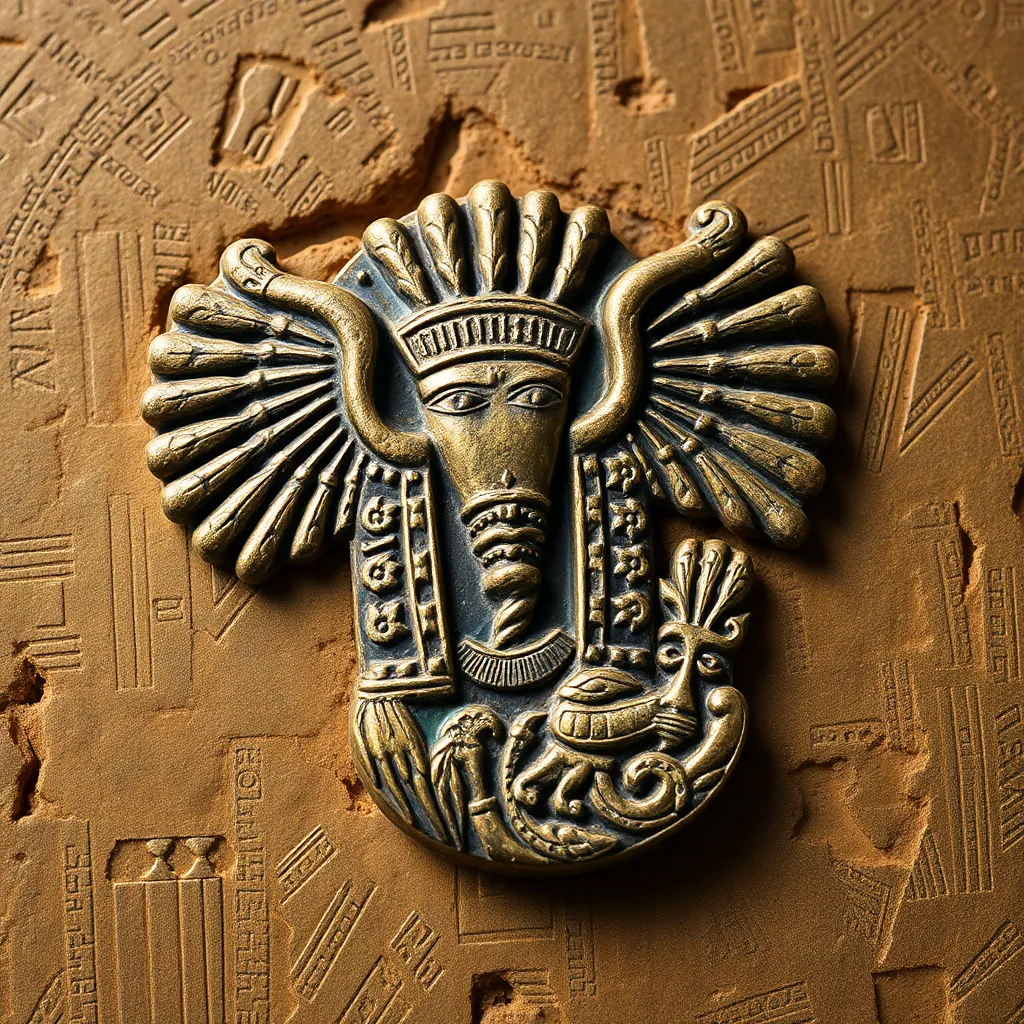The Role of Amulets in Egyptian Education and Knowledge
I. Introduction
In ancient Egyptian culture, amulets were small objects believed to possess protective and magical properties. These charms were made from various materials and were often inscribed with symbols or texts that held particular significance. Amulets were not merely decorative; they played a crucial role in the lives of the ancient Egyptians, especially in the realms of education and the transmission of knowledge.
The significance of amulets in education lies in their perceived ability to enhance learning, safeguard the intellect, and facilitate the acquisition of wisdom. In a society that revered knowledge and learning, amulets served as both physical and spiritual tools to promote and protect intellectual pursuits.
II. Historical Context of Amulets in Ancient Egypt
A. Origins and evolution of amulet use
The use of amulets in ancient Egypt dates back to the prehistoric period. Initially, these charms were simple and often made from natural materials like stones and bones. Over time, the craftsmanship evolved, and amulets became more intricate, incorporating precious metals and gemstones.
By the time of the Middle Kingdom (c. 2055–1650 BCE), amulets had become a widespread phenomenon, embedded in the daily lives of Egyptians from all social classes. They were worn by children, adults, and even placed in tombs, signifying their importance in both the living world and the afterlife.
B. Cultural beliefs surrounding amulets
Amulets were deeply intertwined with the beliefs of the ancient Egyptians. They epitomized the idea of protection against malevolent forces and were thought to invoke the favor of deities. Knowledge, in particular, was seen as a divine gift that needed safeguarding. This belief led to the widespread use of amulets among scholars and students, who sought to protect their intellectual endeavors.
III. Types of Amulets and Their Symbolism
A. Common amulet forms and materials
Amulets took various forms, including:
- Ankh: Symbolizing life and immortality.
- Scarabs: Representing rebirth and protection.
- Eye of Horus: Signifying protection, health, and restoration.
- Uraeus: The cobra symbolizing sovereignty and divine authority.
These amulets were typically crafted from materials such as:
- Gold
- Silver
- Faience (a glazed ceramic)
- Stone
B. Specific symbols associated with knowledge and learning
Certain symbols in ancient Egyptian amulets were particularly associated with knowledge, learning, and wisdom:
- Thoth: The god of wisdom and writing, often depicted with an ibis head, was invoked through amulets to enhance learning.
- Isis: The goddess of magic and knowledge, her amulets were believed to bestow wisdom and protection.
IV. Amulets as Tools for Protection in Educational Settings
A. The belief in amulets as protectors of students and scholars
In the educational institutions of ancient Egypt, such as temples and scribal schools, amulets were commonly used as protective talismans. Students and scholars wore these charms to shield themselves from distractions and malevolent influences that could impede their learning.
B. Use of amulets in schools and temples
Amulets were not only personal possessions; they were also found in classrooms and libraries. It was believed that placing amulets in these environments could create a conducive atmosphere for learning. Teachers would often encourage students to wear specific amulets to help them concentrate and absorb knowledge more effectively.
V. Amulets in the Preservation of Knowledge
A. Role of amulets in religious and academic texts
Amulets were frequently mentioned in religious texts and academic writings. They were thought to contain spells and incantations that could safeguard the knowledge contained within scrolls and tablets. This connection between amulets and texts highlights the ancient Egyptians’ understanding of the importance of preserving knowledge through both physical and spiritual means.
B. The connection between amulets and the afterlife knowledge
In ancient Egyptian belief, knowledge was not limited to the earthly realm; it was considered essential for navigating the afterlife. Amulets were often placed in tombs to ensure that the deceased had access to knowledge and wisdom in the afterlife, reinforcing the idea that learning was a lifelong pursuit, transcending death.
VI. Amulets in Art and Literature
A. Representation of amulets in Egyptian art
Amulets are frequently depicted in ancient Egyptian art, showcasing their importance in society. Wall paintings, carvings, and sculpture often illustrate figures adorned with amulets, emphasizing their protective and magical qualities. These artistic representations served not only as decoration but also as a testament to the cultural significance of these objects.
B. References to amulets in ancient Egyptian literature
Literature from ancient Egypt often includes references to amulets, discussing their powers and the beliefs surrounding them. Texts such as the Book of the Dead contain spells and instructions for creating and using amulets, highlighting their role in both life and the afterlife.
VII. Modern Interpretations and Legacy
A. Influence of ancient Egyptian amulets on contemporary education and beliefs
The legacy of ancient Egyptian amulets continues to resonate in modern culture. Their representation in art and literature has influenced contemporary beliefs about protection and education. Many people today still hold onto the notion that certain objects can enhance learning and provide protection.
B. Amulets in modern schools and educational practices in Egypt
In modern Egypt, the tradition of using amulets persists in some educational settings. Students may carry amulets or charms that are believed to aid in academic success. This practice reflects a deep-rooted cultural belief in the power of symbols and objects to influence learning and personal growth.
VIII. Conclusion
In summary, amulets played a multifaceted role in ancient Egyptian education and the transmission of knowledge. They were not just protective objects; they were integral to the intellectual and spiritual lives of the ancient Egyptians. The cultural significance of amulets in education, their representation in art and literature, and their enduring legacy in modern practices illustrate the deep connections between protection, knowledge, and learning in ancient Egypt.
The fascination with amulets continues, highlighting their importance as cultural artifacts that embody the values and beliefs of a civilization that placed immense value on education and knowledge.




